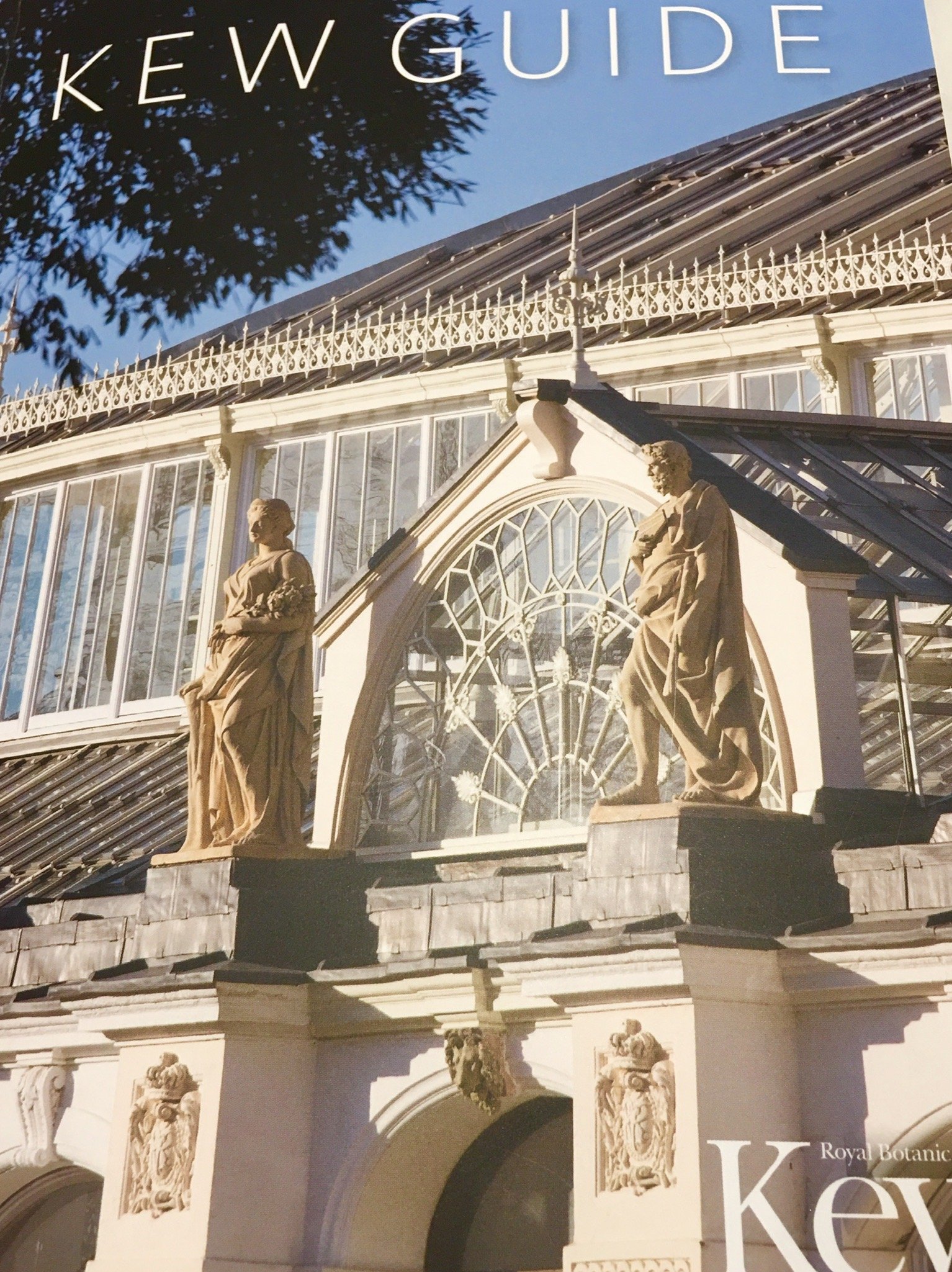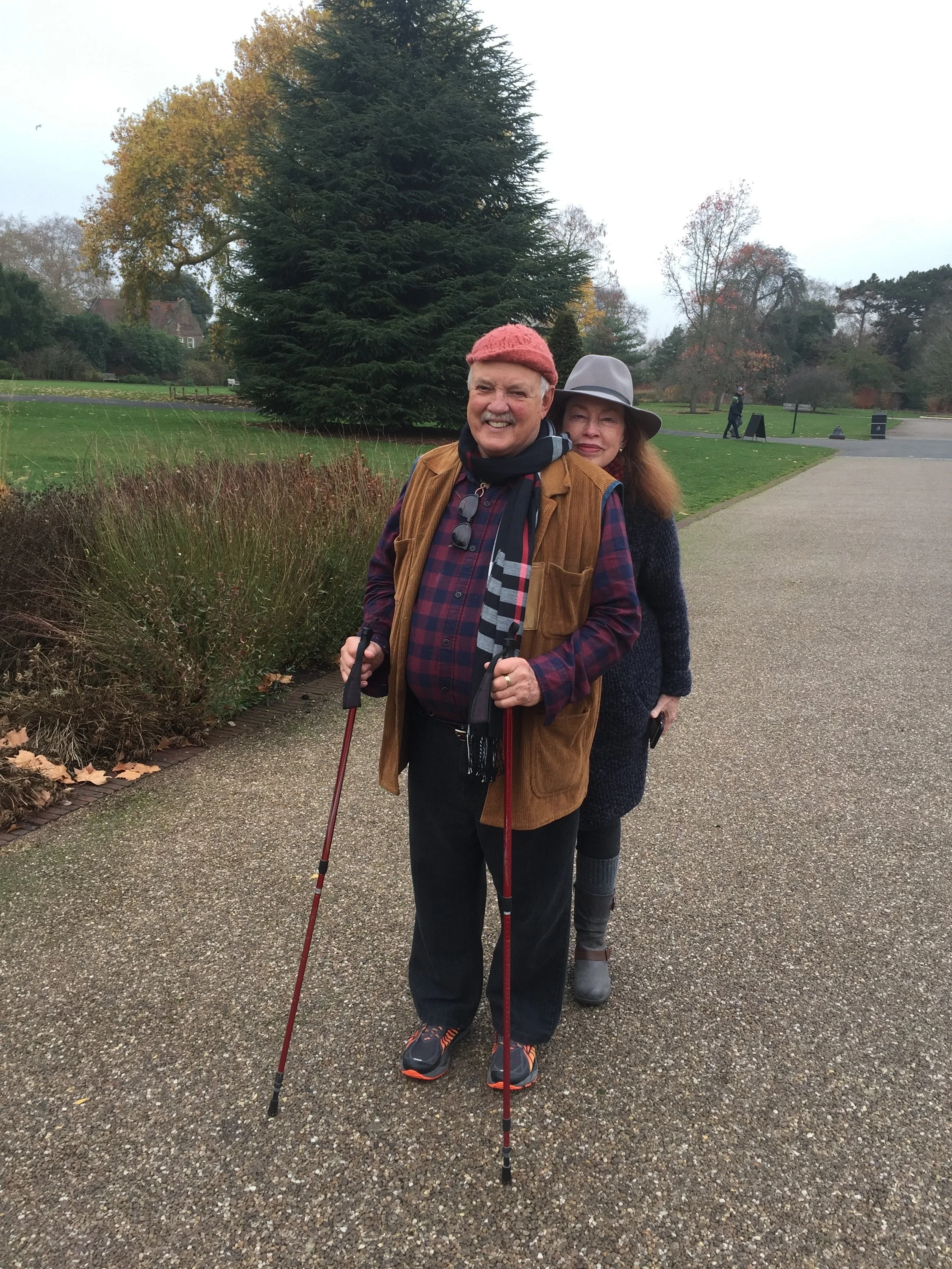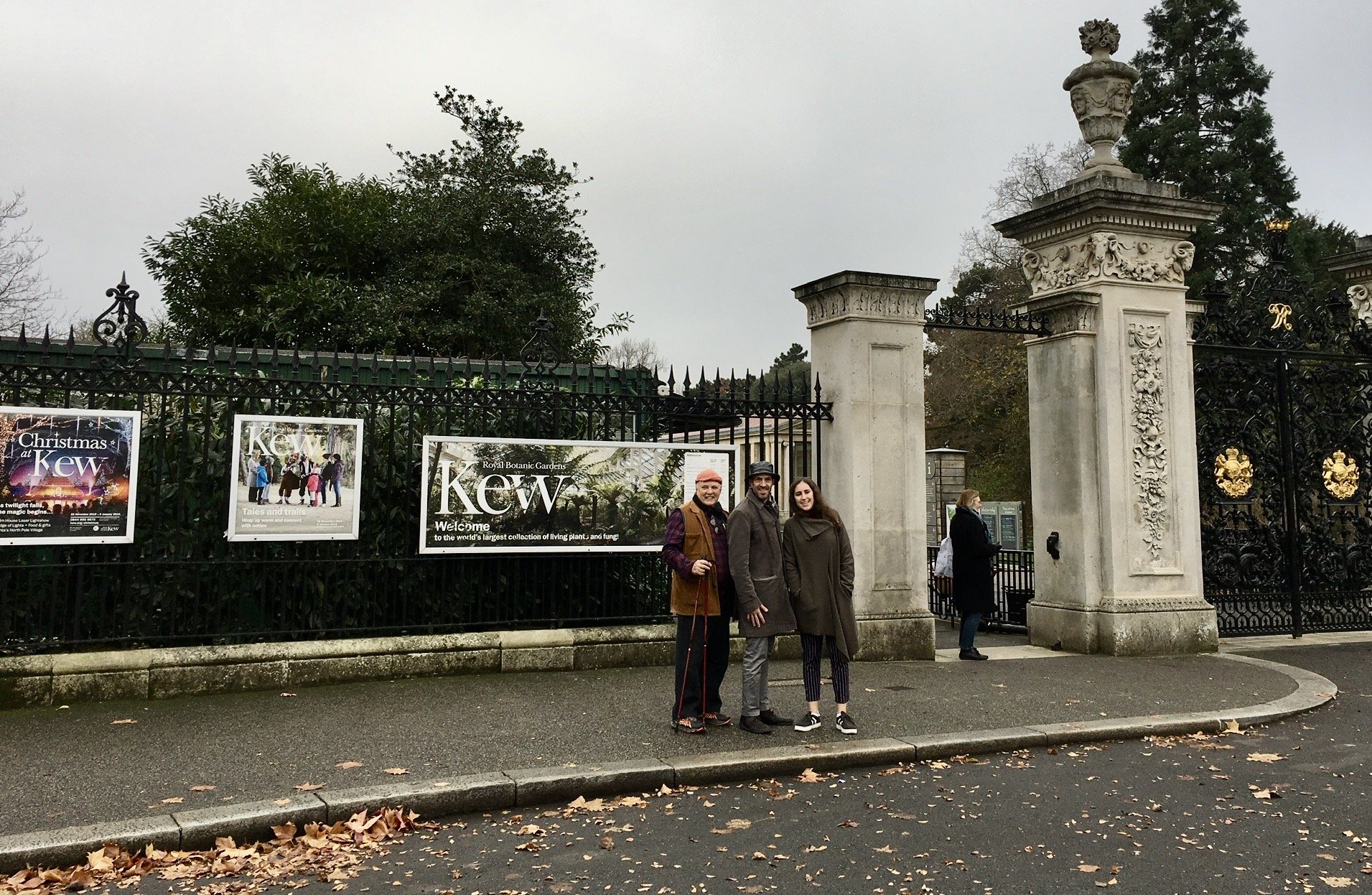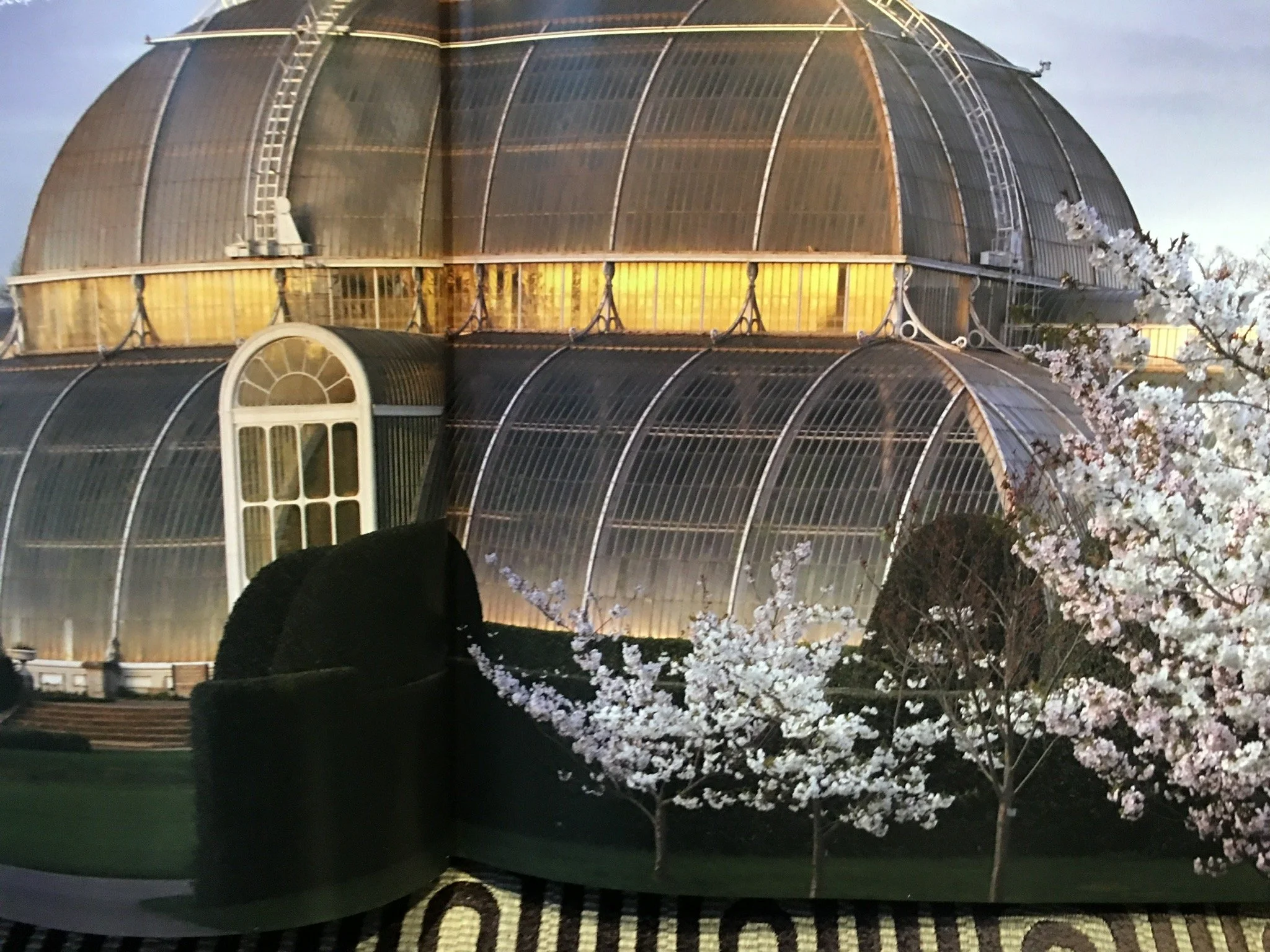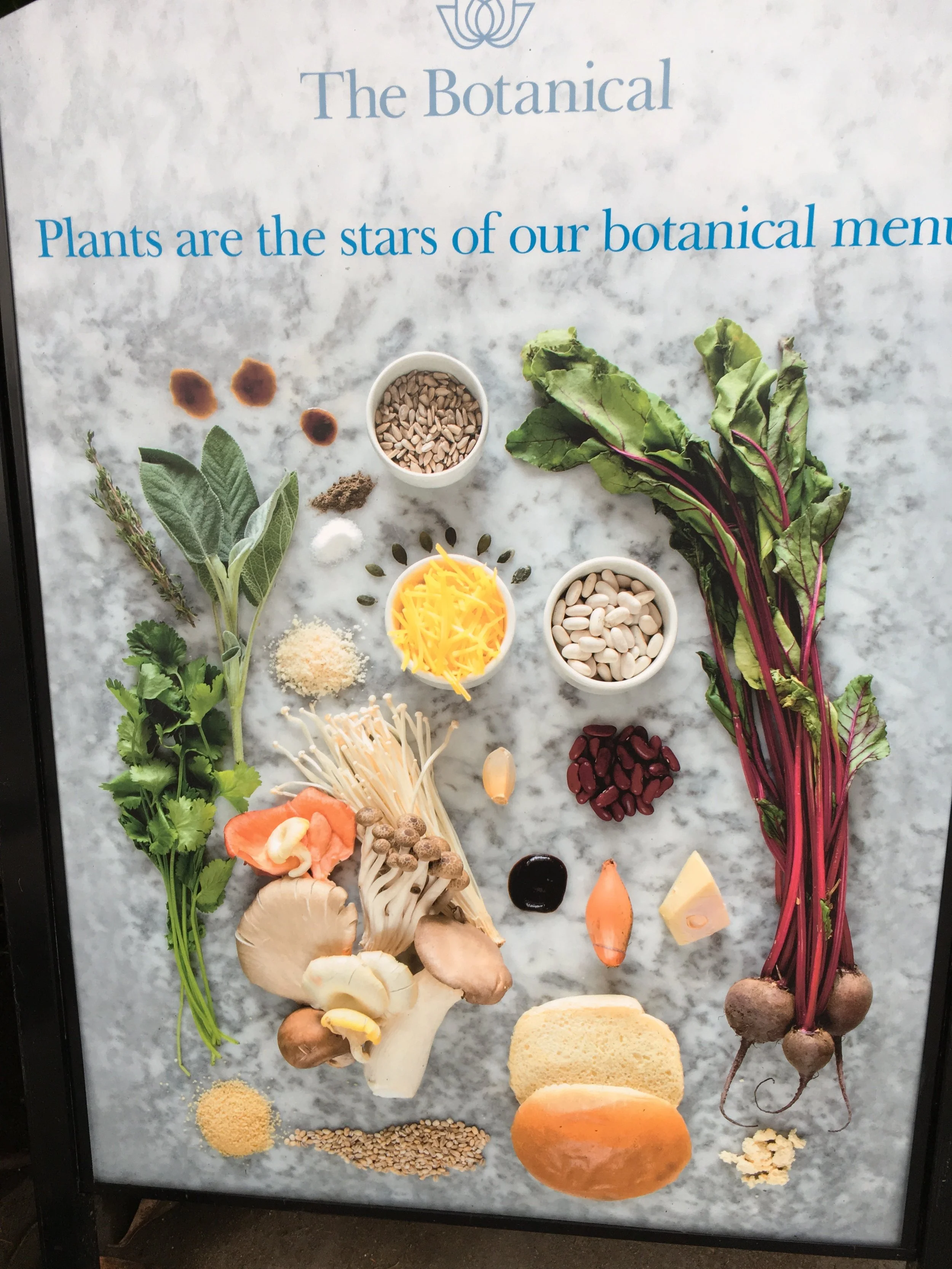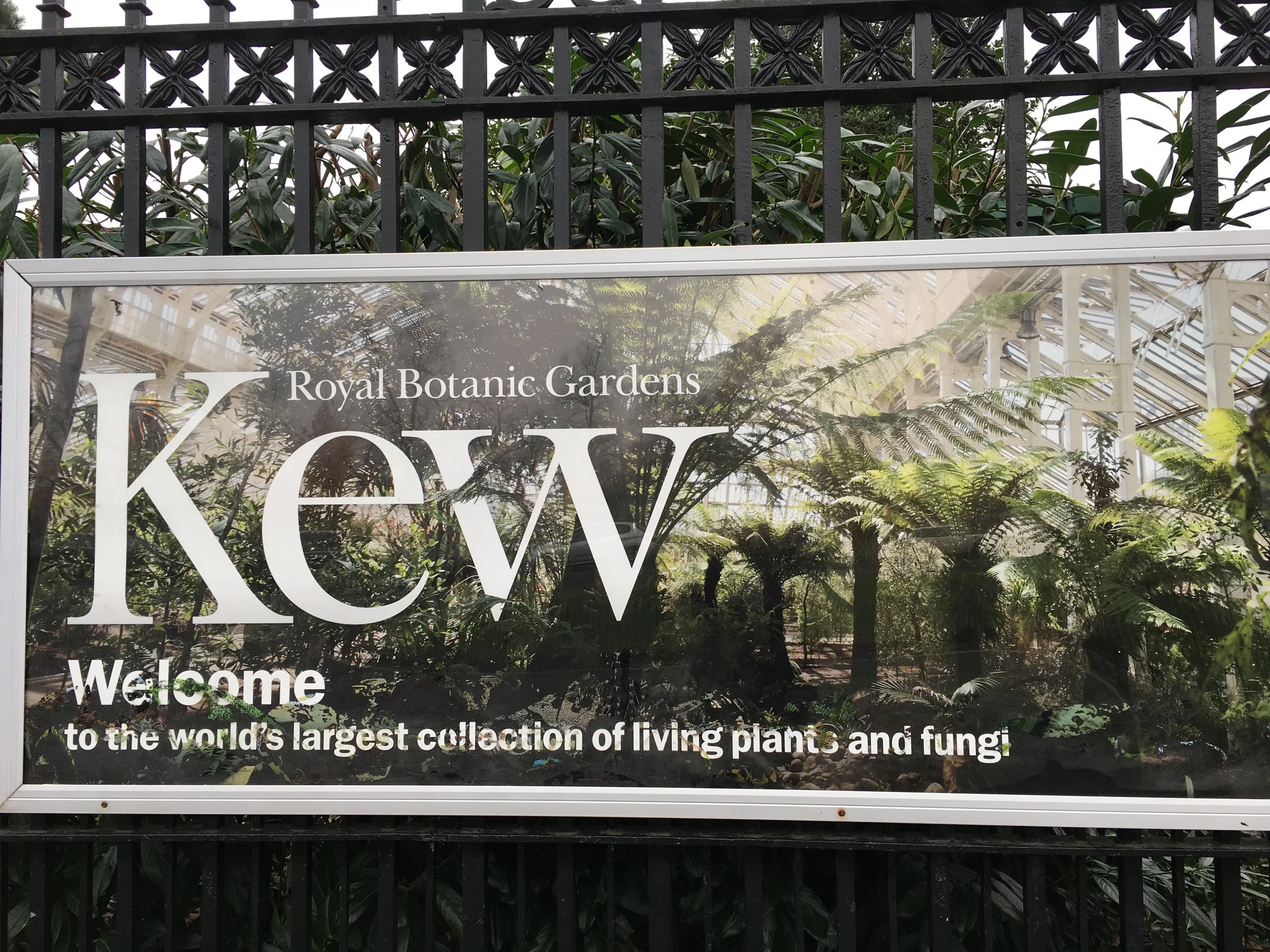London’s Kew Gardens
If you were to list the top ten things to do while in London, I’m guessing that it would be heavy with a rich array of museums, art galleries, churches, Millennium architecture, bridges, towers, royal palaces, Westminster Cathedral, Parliament Square and historic shopping sites like Harrods, Selfridges, and Covent Gardens. At the heart of these destinations, you’d find yourself either crossing or skirting Hyde Park and Kensington Gardens. Tube routes and bus lines must find their way around or under this enormous green space that serve as a year-round retreat for all who live, work, and visit London.
Over the years, Kit and I have stayed in different neighborhoods of London and explored the city on foot whenever possible. Like our first exploration of Manhattan years ago, we’ve learned that it is not the destination but the journey there that is often the most rewarding part of an urban exploration. Traveling in a London black cab, an Uber ride, or descending into the Underground Tube, only to arrive like a groundhog sticking its head up to check on the weather, just isn’t the same as experiencing the city on foot.
What we hadn’t done until our last trip to London was to explore the gardens at the city’s edges. There comes a time in a visit when the crowds and traffic on the streets begins to wear you down and the idea of a walk in a quiet garden is just the ticket. And so it was during our last exploration of London that the idea of spending a day at Kew Gardens was suggested. Once there, I discovered a treasure within London I’d only heard of but never visited. Literally, Kew contains the world in miniature within a single, magnificent garden.
The Royal Botanic Gardens, Kew was founded on land along the Thames River in 1759. This World Heritage site covers 326 acres in Richmond, only minutes from Chiswick where Kit and I stay with our niece Kashya when in London. In the 1800s when British colonies were being founded across the world, Kew’s purpose was both to collect plants of economic value and to become a global repository for plant and fungal knowledge. It then evolved as a place where the public could gather to marvel at the exotic plants displayed outdoors and in purpose-built glass palaces.
Over the past three centuries, Kew has continued to change, stimulating ideas about science and nature and responding to emerging needs of communities around the world. Today with its Herbarium, Fungarium, DNA bank and Millennium Seed Bank Kew forms the most comprehensive plant reference collection on Earth.
The Kew Guide to the grounds describes what visitors experience firsthand. “Flowers open, light alters, seasons pass, gardens mature and the stories you discover about plants and fungi are constantly renewed through seasonal light and displays.” Kew’s Victorian green houses are botanical palaces that transport visitors to other worlds—steamy rainforest, cool arid desert, and a world of giant water lilies. In the Palm House we were dwarfed by towering trees with dates strands amidst giant fan-shaped fronds, fruiting banana trees, and flowering ginger plants—all sustained by functioning steam systems.
“Several tree specimens,” according to the Kew Guide,” have witnessed its entire history, through agricultural and industrial revolution, through world wars, the discovery of penicillin and DNA to the turn of the Millennium.” Kew reminds us of the critical contribution trees make to the environment, climate stability, biodiversity, the economy, and humanity in this age of dramatic global environmental change. As a global repository of botanical living history, Kew is using that knowledge “to address great challenges: feeding, healing and sheltering growing populations while conserving priceless natural resources.”
I cannot envision a garden more beautiful and ageless or a mission more noble and essential in today’s world. I’ve already decided that in my next life, I want to be an orchardist at Kew. In the meantime, I cannot imagine a trip to London without at least a day or two afoot in the Royal Botanic Garden, Kew.
